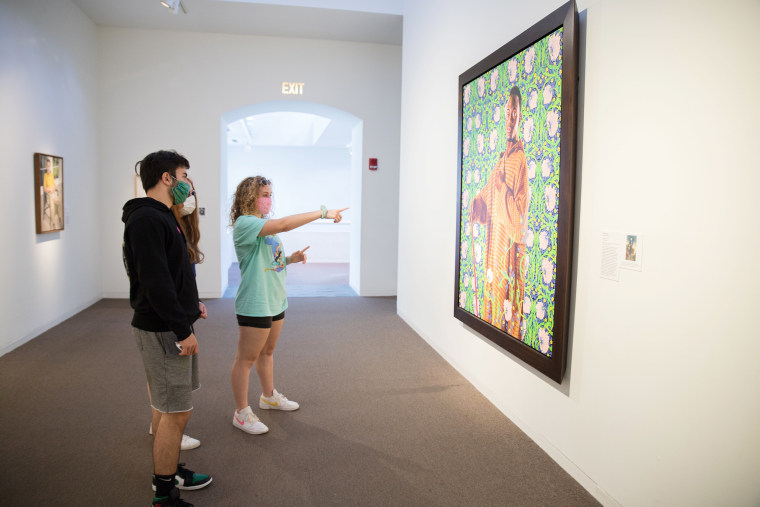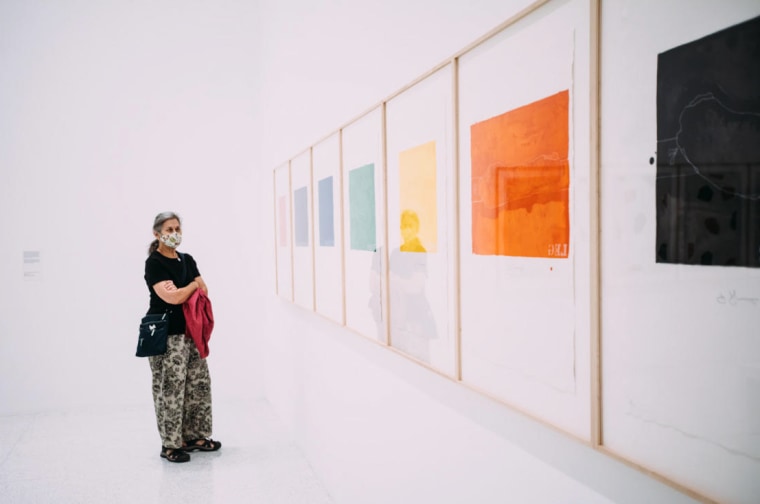New York City museums will reopen later this month, with timed entry and other precautions, Gov. Andrew Cuomo announced Friday — but one-third of U.S. museums and attractions won't ever open their doors again, according to a recent survey.
Before the pandemic, museums, zoos, science centers and other historic and cultural attractions across the United States welcomed more than 850 million visitors a year, supported more than 726,000 jobs and contributed more than $50 billion a year to the economy.
Since March, that picture has faded. Many museums have been forced to make staff layoffs and furloughs, temporarily close doors, cut programs, lose revenue and, for those lucky enough to have them, dip into endowments.
“Initially, many museums resisted the temptation to tap their endowments to help plug their budget shortfalls,” Scott Perry, partner and co-leader of the Endowments and Foundations practice at NEPC, an investment firm, told NBC News. "But as the pandemic has continued on, some of these museums are reconsidering this approach and spending at much higher levels than they otherwise would,” he added.
A June survey from the America Alliance of Museums found that as many as 12,000 of America's museums may close for good.
While some have rolled out everything from virtual escape room nights to live-streamed galas and animal cams, these types of activities can't fully replace the regular revenue stream of in-person visits.
For now, such efforts “keep museum staff employed and keep the community engaged,” said Brendan Ciecko, CEO and founder of museum engagement platform Cuseum. “They also generate revenue, which is the best of all worlds.”
Other museums have already begun to welcome back visitors, albeit with reduced capacity and restrictions on activities.
The Walker Art Center in Minneapolis is following the lead of many grocery stores and shops by offering special gallery hours for at-risk visitors.

In Texas, the San Antonio Museum of Art is open, with visitors enjoying the additional space required for social distancing. One visitor told NBC News her family “felt safe the whole way through” their recent visit. The museum is also gaining off-campus fans by offering free downloads of artwork from its collection to players of Nintendo’s popular "Animal Crossing" game for use in virtual homes or art galleries.
The IMAG History & Science Center in Fort Myers, Florida, is open with virtual sessions and interactive virtual birthday parties for kids (and adults) with wizard, superhero, Star Wars and other themes.
However, some museums have already announced permanent closures.
In mid-May, the five-year-old World of Speed Motorsport Museum in Wilsonville, Oregon, announced it would close and distribute its funds and assets — which include historic race cars, boats and motorcycles — to schools and other museums.
The museum closure is a strongly felt loss not only because “it put Wilsonville on the map as a major new tourism draw, but because the museum had formed a successful partnership with the local community college and 12 area high schools to host automotive classes for hundreds of students,” said Mark Ottenad, Public/Government Affairs Director for the City of Wilsonville.
In June, the Children’s Museum in Richmond, Virginia, closed its Fredericksburg branch. “This decision was made with a heavy heart,” the museum's Executive Director Danielle Ripperton said in a statement. "It is necessary in light of our extended closure and resulting loss in revenue,” she added.
In early July, the Annenberg Space for Photography in Los Angeles announced its closure after 10 years, promising to donate its collection of prints to a “a highly reputable public archival institution.”
Other museums around the country may now be grappling with making similar decisions.
“Our survey was done before the latest virus spikes that happened in July,” said Laura Lott, president and CEO of the American Alliance of Museums, which conducted the survey. “And from what I’m hearing, if we did that survey again today it would be worse than in June, given that states are going back a phase and the virus is spiking in different places.”
Lott says some museums she has talked with are playing the “scenario game” about options to avoid closure.
“They don’t want to talk about it before they’re sure that’s what they’ll have to do,” she said.
Some places are taking matters into their own hands. The Space Camp at the U.S. Space and Rocket Center in Huntsville, Alabama, started a GoFundMe account to "save Space Camp." Just 17 days in to the fundraiser, the museum has already met — and exceeded its $1.5 million goal.
Not every cultural institution will be so lucky.
"Right now, a lot of places are just trying to stretch resources as far as they can go to give themselves a chance — before making a decision to close,” Lott said.
